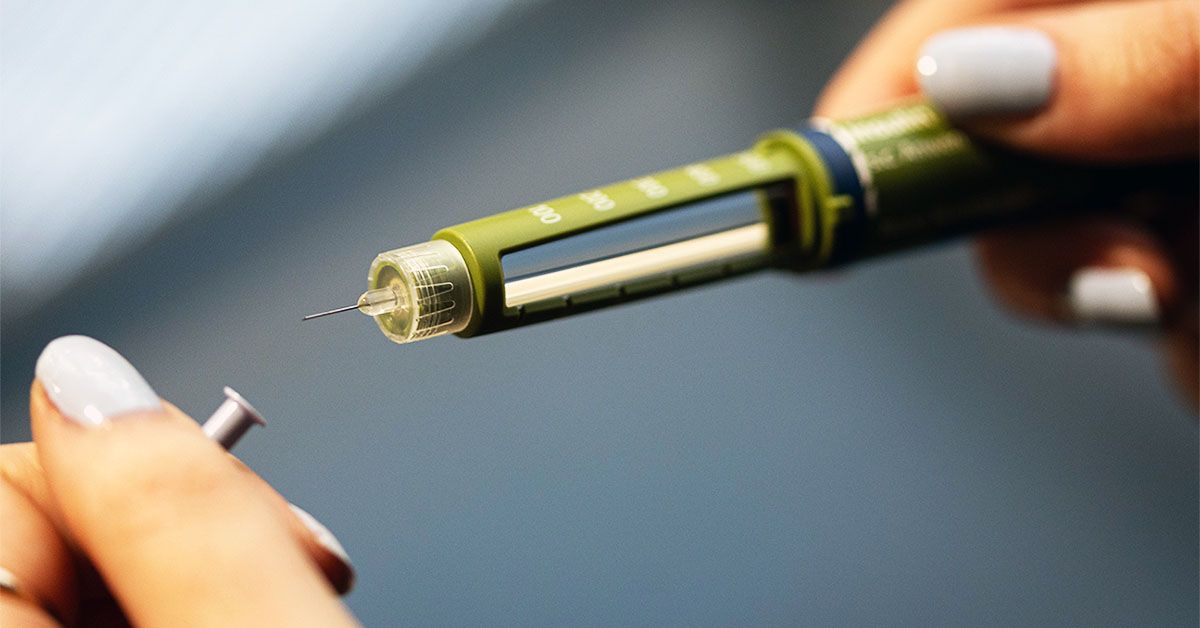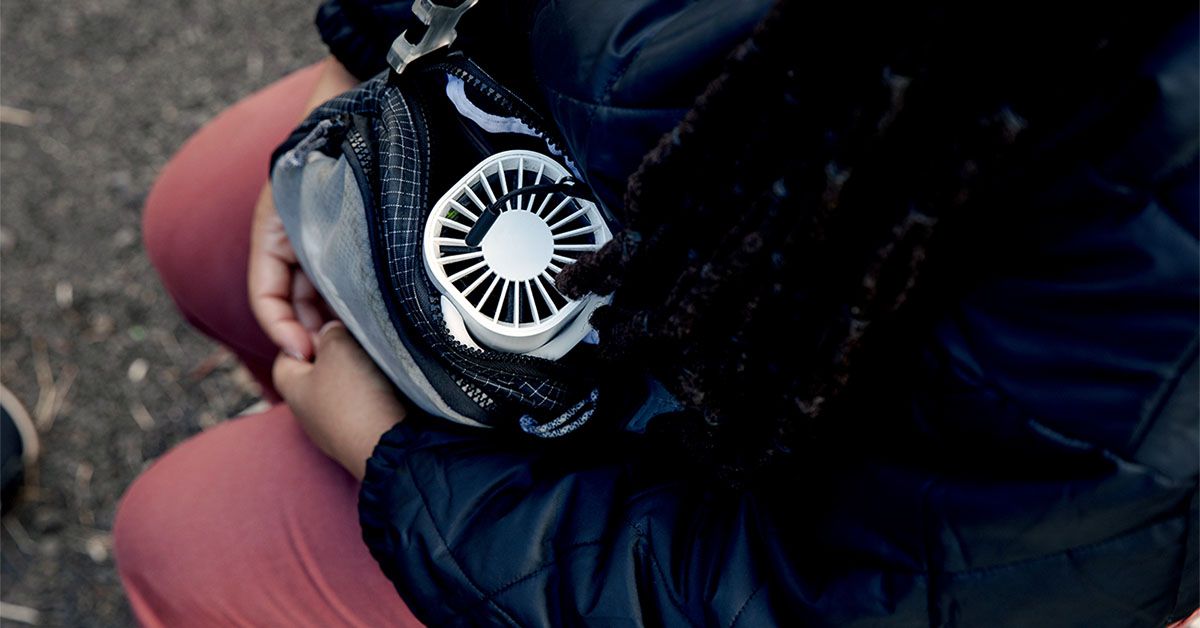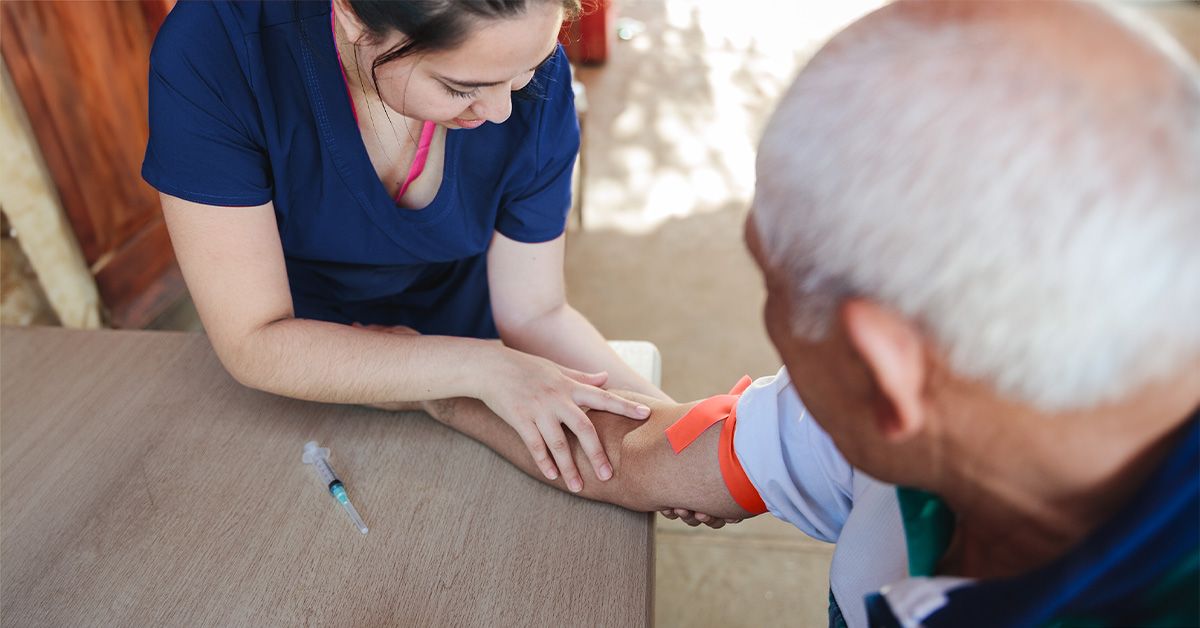Welcome to Start TODAY. Sign up for our Start TODAY newsletter to receive daily inspiration sent to your inbox — and join us on Instagram!
Good mornings are an exercise aptly named. The move is called “good morning” because it mimics the motion of bowing or nodding your head in a greeting. But the compound exercise is also a great way to “wake up” the entire posterior chain — or back of the body — and get your blood flowing. Plus, it targets your hamstrings and lower-back muscles, which can help improve your overall lower-body strength.
It’s a worthwhile exercise to include in your exercise routine, especially if you sit all day, which can cause your glutes to weaken —a condition referred to as “dead butt syndrome.” However, if done incorrectly, good mornings are not only less effective, but can place undue stress on the back, so mastering proper form is key.
Good morning exercise benefits
The good morning exercise targets the entire back of the body, including your hamstrings, glutes and lower-back muscles. It is a great way to strengthen your posterior chain, which is especially important if you live a sedentary lifestyle.
As you hinge forward at the hips, your hamstrings are actively engaged to control the movement. At the same time, your glutes are working to stabilize your hips and help you maintain proper form. Additionally, your lower-back muscles, including the erector spinae, are activated to support your spine and keep your back straight throughout the exercise. It is a great all-around exercise for strengthening your posterior chain, improving your overall lower-body strength and combatting the effects of sitting all day (like underactive glute muscles).
Common mistakes when performing the good morning exercise
One of the biggest mistakes I see people make is rounding their back while performing a good morning. This is a sign that you aren’t keeping your abs engaged, while can put pressure on your back. Instead, engage the core and make sure you maintain a flat back while focusing on a spot on the floor in front of you. Another common mistake is locking the knees. You want to maintain a slight bend in the knee as locking the knees can cause hyperextension.
Modification: Seated good morning exercise
- Begin by sitting in a chair with your hands behind your head. Keep your feet flat on the floor.
- Slowly lean forward, hinging at the hips and keeping your back straight as you move your chest toward your legs.
- Once you reach your legs, slowly lift your body back into the starting position. Repeat 10 times.
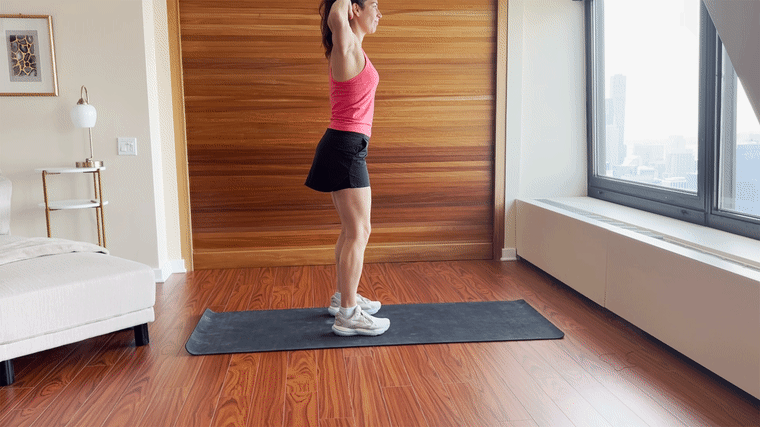
Good morning exercise form
- Start with your feet shoulder-width apart, with your hands placed behind your head. Focus on keeping your shoulders back and your core muscles engaged.
- Take a deep breath in and on the exhale, hinge at the hips, bending your chest toward the floor until your body forms an upside-down “L” shape. You should feel a slight stretch in your hamstrings. If you feel any pain or uncomfortable pulling, you’ve lowered too far!
- Slowly move your torso back up into a standing position on your exhale. Squeeze the glutes and hamstrings to return to standing tall. Repeat 10 times.
4 exercises to help you better perform a good morning

Bird dog
Start on all fours with your palms directly below your shoulders and your knees below your hips. Straighten your left arm straight out in front of you and your right leg out behind you. Hold for a few seconds, then repeat using your right arm and left leg. Alternate between sides, performing 10 repetitions on each side.

Romanian deadlift
Standing with feet hip-width apart, slightly bend your knees. Hold a dumbbell in each hand, with your palms facing the body. Push your hips back to hinge forward. Think of trying to push your butt against a wall behind you or shut a door with your butt. Maintain an engaged core. Press your feet into the floor as you allow the dumbbells to brush down your legs stopping around your shins. Each person is different, but the goal is to continue moving down your legs until your hips can’t push back any further and you feel a stretch in the hamstrings. Pause for a second before returning back to the starting position by engaging the hamstrings. Repeat 10 times.
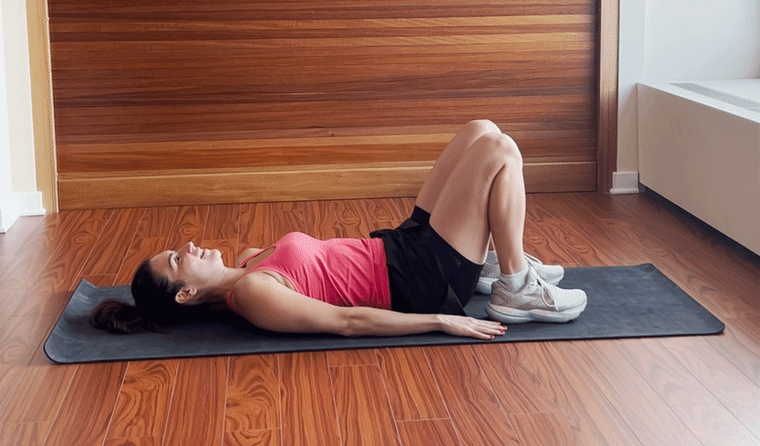
Glute bridge
Lie on your back with your feet flat on the floor and knees bent. Engage your core, pressing your low back into the ground. Then, slowly curl your back off the ground driving your hips toward the sky. Do not hyperextend your back by lifting up too high. Stop when your hips have created a straight line from your knees to your upper back. Hold the position, then slowly lower back down to the starting position. Repeat for 10 repetitions.
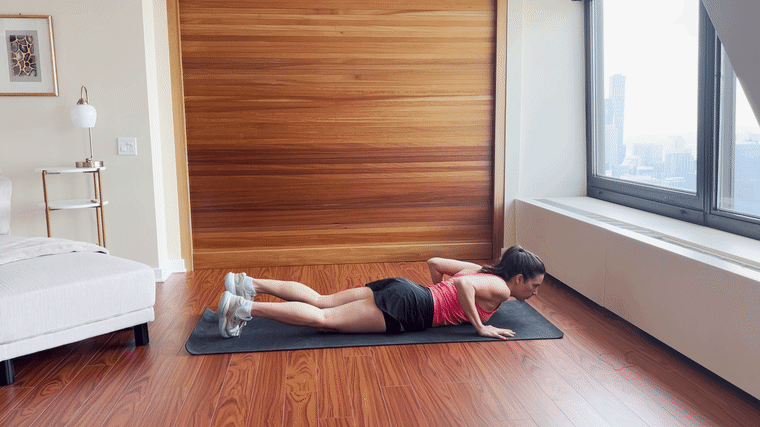
Superman
This exercise engages the entire back of the body, from the upper back to the bottom of the legs. This exercise teaches the back to work together in tandem, with the shoulders lifting the arms and the glutes, hamstrings and muscles of the back working to lift the legs. To perform the move, lie on your stomach and reach the arms forward and legs back. Open the legs as wide as the hips and the arms as wide as the shoulders. Pull the belly button in, away from the ground, to engage the abs. Relax the shoulders as you reach the arms up off the ground and squeeze the quads as you lift the legs off the ground. Avoid putting too much pressure on the low back by ensuring that the abdominals stay contracted. All the muscles in the back of the body will be engaged, from the calves up to the upper back muscles. Hold for a second before lowering the arms and the legs. Repeat 10 times.
Read the full article here








